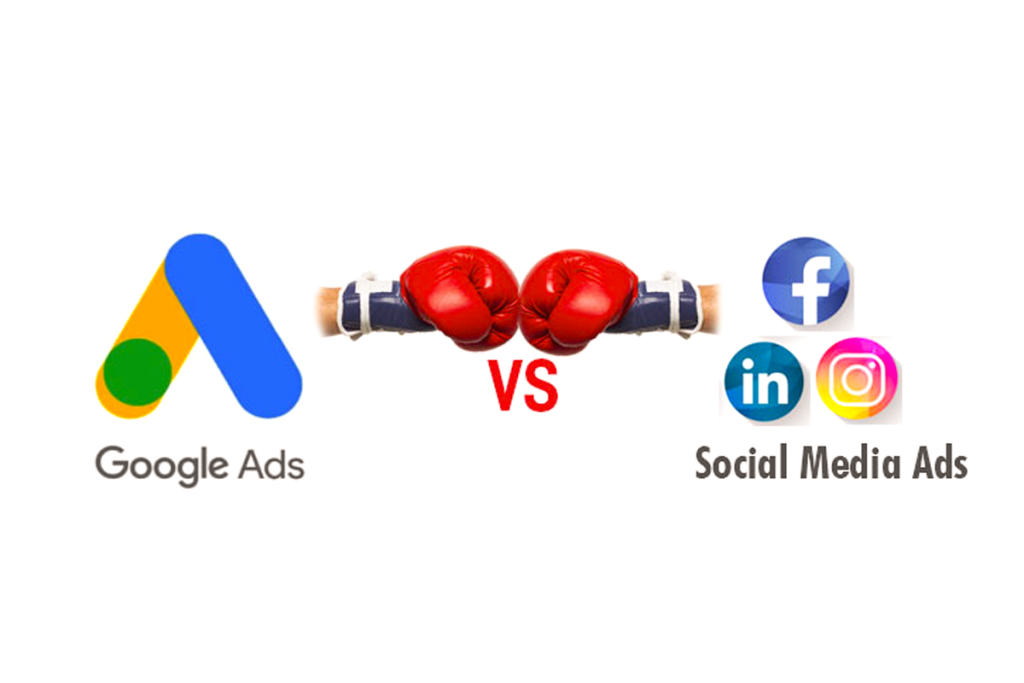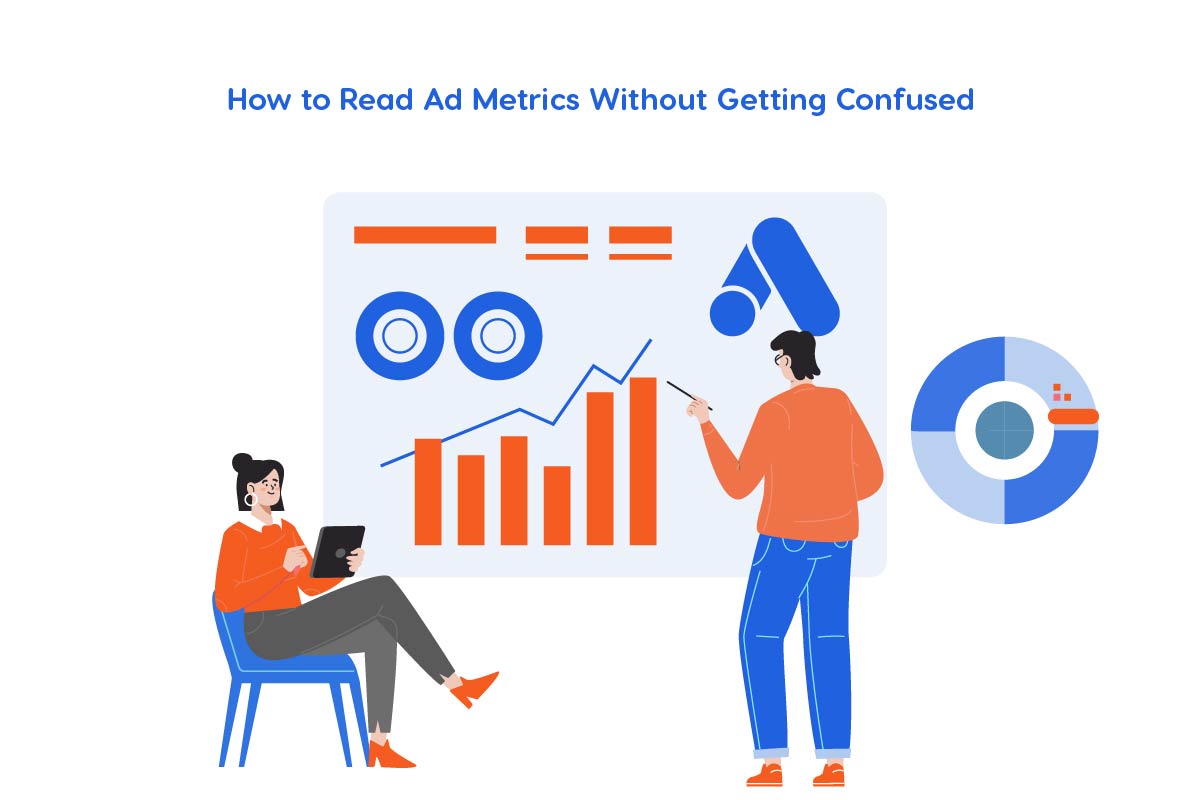The online world has transformed the way businesses want to address their customers. The days when advertisement was restricted to TV commercials, billboards and newspapers are gone. To expand a business nowadays you must be seen online and two of the most effective means of doing that are Google marketing and social media marketing. These two platforms are the dominant ones on the internet. But, they serve different functions and appeal to different people differently. Google is where people turn to when they already have a need or a question. They enter certain queries such as the best pizza on my block, the cheapest laptops on the Internet, or similar, so they are already prepared to buy or choose. Conversely, social media such as Facebook, Instagram, Tik Tok and LinkedIn are places an individual uses to interact, entertain and learn new things. The customers here may not be out there actively seeking your product. But,once you have the right strategy you can capture their attention, develop interest and even be inspired to buy.
Now a very important question that this raises to businesses is, Should you give more attention to Google or social media? It is not as easy as that since the two have their strong points and weaknesses. Others succeed by investing a lot of money in Google Ads and search engine optimization to attract high-intention customers, and others succeed by establishing robust communities and brand loyalty through inventive social media campaigns. This article will explain the differences, advantages and problems of both Google and social media marketing. At the end, you will have a better idea of what platform will best fit your objectives.

Understanding Google Marketing
What is Google Marketing?
Google marketing is defined as all the methods through which businesses can make use of Google platforms to market their products to clients. Google being the most popular search engine in the world today has become the first option when people seek a solution, shop or compare products. This makes it an extremely effective business tool regardless of the size of the business.
Google marketing is a combination of organic (free) and paid marketing, but is not limited to ads running only. Here are the main parts:
SEO (Search Engine Optimization):
This refers to the process of making your site look higher in the Google search results. As an example, when you own a bakery in Lahore, you could use SEO to get your site to show up when someone searches best bakery near me or fresh cakes in Lahore.
Google Ads (PPC):
It is a paid advertisement that is located on the top of the search page. As an example, when a person enters in the search engine buy smartphones online and you are selling smartphones, then your advertisement will be displayed instantly. You do not have to pay until somebody clicks your advertisement, hence the term, pay-per-click (PPC).
Google Display Ads:
It is a visual advertisement such as a banner, video, or graphic that can be placed on other sites, applications, or even YouTube. They are excellent at creating awareness since people can view them as they browse the Internet, although they may not be searching.
Google Shopping Ads:
These types of advertising are particularly effective with e-commerce businesses since the product and its prices and links appear in Google search results directly.
YouTube Ads:
YouTube is a Google owned company hence this advertisement also falls under Google marketing. Video advertisements may appear either at the beginning or middle of the video and they will be viewed by millions.
Benefits of Google Marketing
Using Google ads for marketing comes with many advantages:
High Intent Audience:
Google audiences tend to have a purpose. Indicatively, a user who is typing in terms like plumber near me, or even best running shoes is already interested in purchasing or doing something. This renders them more useful as compared to chance consumers on other sites.
High Reach:
Google is considered to be the biggest search engine in the world, with billions of search queries being conducted every day. Whatever you sell (clothes, services, or digital products) there is a high likelihood that someone is searching online on Google.
Targeting and Tracking:
With Google, you can target individuals by their location, age and device as well as by the keywords they are using. Not to mention that each click, impression and conversion is measurable. This will give you a glimpse of what is going on and what you should improve.
Long-Term Expansion with SEO:
SEO allows your site to keep generating free traffic over months or even years without having to pay ads over and over again. To illustrate, when your article is positioned on how to care of indoor plants, it can give you visitors at any time without having to spend money.
Various Ad Formats:
Whether it is search text ads or YouTube videos, Google provides different ads formats that allow you to show your business in any way you choose.
Challenges of Google Marketing
Even though Google is powerful, it comes with some challenges:
There is a lot of Competition:
Due to the increasing number of businesses that advertise on Google, there is a lot of competition in popular keywords (such as buy shoes online). Smaller companies might not be able to compete with bigger brands that allocate more money.
Expensive in certain industries:
The price per click in certain industries such as insurance, real estate, or healthcare can be highly costly. As one example, in certain situations, companies spend a few dollars just to have a single individual to click their advertisement.
SEO is a Long-term Strategy:
SEO may be economical in the long-term, but it is a long-term process. Getting to the first page is not a one-day job and it might take months of regular content development, optimization, and backlinking.
Understanding Social Media Marketing
What is Social Media Marketing?
The idea of social media marketing is to use the popular social media channels to communicate with the people, advertise products and create brand awareness. Social media is where people spend time, unlike Google where people do not search without purpose and intention. This opportunity allows businesses to position themselves before their users in a fun, engaging and memorable manner.
It is not only about sharing pictures or videos but also creating a presence, forming relationships and implementing tactics that might motivate the users to want to interact with your brand. The following are the key components of social media marketing:
Organic Posts:
These are free posts you make on your page or profile like product updates, photos, videos or behind the scenes. An example of this could be a cafe sharing daily coffee specials or short videos.
Paid Ads:
Virtually all social sites have advertising opportunities. These advertisements can be personalized to target individuals according to their age, interests, geographical position or even what they have been viewing online recently. A web-based clothing store can post advertisements among 18-25 year old women who have an interest in fashion.
Stories and Reels:
Short-form content such as Instagram stories, Facebook reels or Tik Tok videos are extremely popular. They are assertive, catchy and are most likely to become viral.
Influencer Marketing:
This is where companies enlist the services of well-known figures with an existing following. As an example, a skincare company may engage a beauty social media influencer who tries the products and provides their audience with truthful reviews.
Community Building:
Selling is not the sole purpose of social media, but also about building loyal followers. This may involve conducting running groups, live question and answer sessions or ensuring that customer comments and messages are replied to on a regular basis.

Social Media Marketing Advantages
Below we have given some of the benefits of social media marketing.
Develops Brand Personality:
Social media allows the companies to present their human side. Your brand values, culture and unique style can be shared through posts, stories and live videos. You can create a community here. In the case of a clothing brand, they can share a behind the scenes video of a photoshoot, and that way, people can feel that they are part of the personality of the brand.
Interaction and Bi-Directional Communication:
The social media gives the opportunity to interact. The customer is able to like, comment, ask questions, or share feedback. This creates trust and makes them feel that the brand is a good listener.
Viral Potential:
The capacity of social media to make content go viral is one of its biggest strengths. One post, meme or short video of creative content can go viral and be seen by a lot of people without spending a huge budget. An example is how thousands of customers were acquired by other small companies in the middle of the night due to a viral trend on TikTok.
Targeting Accuracy:
Social platforms gather a lot of user information and this enables the advertiser to target the right people. As an example, you can target individuals who reside in Karachi, aged between 20-30 years, and are interested in fitness. This degree of accuracy can optimize the ads.
Affordable Brand Recognition:
Social media can be more affordable than traditional advertising, particularly when you produce content that is interesting to people and that they share without incurring additional expenses.
Challenges of Social Media Marketing
Below we have given some of the challenges of social media marketing.
Shorter Attention Spans:
People scroll quickly through their feeds, and competition for attention is fierce. If your content is not engaging within the first few seconds, users may simply skip it.
Need for Constant Content Creation:
Social media works best when you post consistently. However, this can be challenging for businesses that don’t have the time or resources to create fresh, creative content regularly.
Changing Algorithms:
Platforms like Facebook, Instagram, and TikTok constantly update how they show content. A post that might have reached thousands last month may only reach a few hundred today due to algorithm changes. Businesses must adapt their strategies frequently to stay visible.
Negative Feedback Risks:
Unlike Google Ads, social media exposes brands to public comments. While this can be positive, unhappy customers can also leave negative remarks, which requires careful management.
Harder to Measure Direct Buying Intent:
Many users on social media are not looking to buy. They are there to relax or be entertained. This means it often takes more effort to turn them into paying customers compared to Google, where intent is clearer.
Did You Know?
When to Focus on Google Marketing
Google marketing is best when:
- You want immediate customers who are searching to buy.
- You sell products/services that people actively search for.
- You can invest in long-term SEO to build authority.
- You want measurable ROI with clear conversions.
When to Focus on Social Media Marketing
Social media marketing is best when:
- You want to build brand awareness and trust.
- Your products need visual appeal (fashion, food, travel, lifestyle).
- You want to connect with younger audiences.
- You plan to use influencer collaborations to boost credibility.
Google vs. Social Media – Important Differences
| Factor | Google Marketing | Social Media Marketing |
|---|---|---|
| User Intent | High (people actively searching) | Low–Medium (people browsing/engaging) |
| Best For | Lead generation, service businesses, e-commerce | Branding, awareness, engagement, lifestyle products |
| Speed of Results | Google Ads = Fast SEO = Slow | Ads = Fast Organic = Medium |
| Cost | SEO = long-term investment Ads = costly | Ads = scalable Organic = time-consuming |
| Content Style | Text, keywords, website optimization | Visuals, videos, short-form content |
| Audience Targeting | Based on search queries & intent | Based on demographics, interests, behavior |
Final Thoughts
Instead of choosing Google vs. Social Media, think Google + Social Media. Both channels work best when used together:Use Google to capture high-intent buyers. Use Social Media to build awareness, trust, and community.
A smart strategy is to diversify. Invest in SEO for long-term growth, run paid Google Ads for quick leads, and keep your brand active on social platforms for engagement and loyalty. In the digital world, balance wins.





